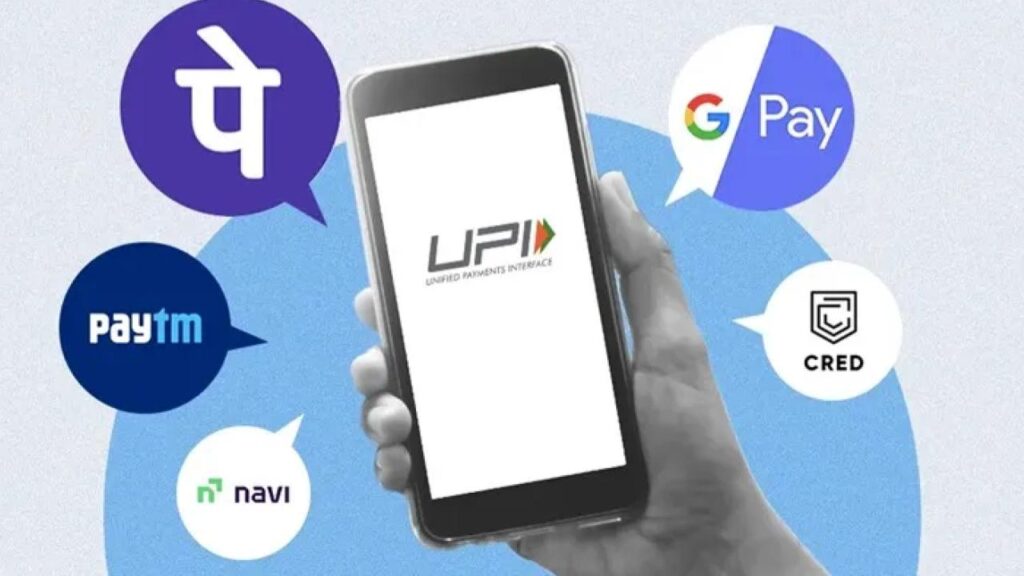The rise of digital payments has revolutionized the way we manage money, and one of the most exciting developments in this space is the expansion of Unified Payments Interface (UPI) beyond India’s borders. Originally launched by the National Payments Corporation of India (NPCI), UPI has become a powerful tool for millions of Indians to make fast, easy, and secure payments. But now, it’s going global, allowing people from all over the world to make payments on foreign websites and in stores.

UPI Takes Over the World
| Key Feature | Details |
|---|---|
| UPI Global Reach | Accepted in over 20 countries worldwide, including the USA, UK, UAE, and more. |
| UPI One World | A prepaid wallet for foreign nationals and NRIs visiting India. |
| Countries Accepting UPI | Includes the USA, Canada, Australia, UAE, UK, Singapore, and more. |
| Security | UPI uses robust two-factor authentication and encryption to secure transactions. |
| Ease of Use | Simple QR code scanning and mobile-based payments for international users. |
| Key Statistics | UPI recorded over 8 billion transactions in 2024, with a transaction value of $60 billion. |
In conclusion, UPI is on the verge of transforming the way we handle payments not just in India, but all around the world. With its easy-to-use apps, global reach, and security features, UPI is poised to become the next big thing in international payments. Whether you’re a tourist visiting India or an NRI looking to send money home, UPI provides an efficient, cost-effective, and secure solution. So, if you haven’t already, it’s time to get onboard and experience the future of payments today!
What Is UPI and Why Is It a Game-Changer?
Unified Payments Interface (UPI) is a real-time payment system that enables users to send and receive money directly from their bank accounts using their mobile phones. Launched in India in 2016, UPI has quickly become the go-to payment system for over 250 million users in India. It simplifies payments by linking a user’s bank account with their mobile phone number and allowing for instant fund transfers.
What sets UPI apart is its ease of use, security, and low-cost nature. Whether you want to pay for your morning coffee, settle a bill with friends, or buy something online, UPI allows you to do it all with a simple click or a scan of a QR code.
But wait, it doesn’t end there. UPI’s expansion into international markets has opened up an entirely new world of possibilities for both users and businesses. If you’re someone who travels or does business abroad, UPI’s global capabilities are here to change the way you think about payments.
UPI Goes Global: How It’s Impacting International Payments
India has made significant progress in taking UPI beyond its borders, creating a more connected and efficient global payment ecosystem. As of 2025, UPI is accepted in over 20 countries worldwide, including major economic hubs like the United States, United Kingdom, Australia, Singapore, and United Arab Emirates (UAE).
For Indian citizens living abroad, this means they can now use UPI for a variety of purposes, such as paying bills, purchasing goods, and transferring money back home. It also simplifies payments for foreign visitors to India who wish to use digital payment methods without dealing with the hassle of exchanging currency or getting a local bank account.
One of the most important developments is the introduction of UPI One World, a special prepaid wallet service aimed at international travelers and Non-Resident Indians (NRIs) visiting India. With this service, users can load their wallet with Indian Rupees (INR) and make payments via UPI-enabled merchants throughout India.
Countries Embracing UPI Payments
The list of countries where UPI is now accepted is growing fast. As of now, UPI payments are available in countries like:
- United States
- United Kingdom
- Singapore
- Australia
- United Arab Emirates
- Canada
- Malaysia
- Sri Lanka
- Thailand
- Nepal
- Mauritius
- Russia
These countries have either partnered with NPCI or introduced UPI integration into their local payment systems, enabling seamless payments for foreign visitors and the Indian diaspora alike.
How to Make UPI Payments on Foreign Websites and Stores
Making payments on foreign websites or in stores using UPI is straightforward. Here’s how you can get started:
1. Get the Right App
You’ll need a supported app like PhonePe, Google Pay, or a specialized app like UPI One World for international travelers. These apps allow you to link your bank account and start using UPI instantly.
2. Load Your Wallet
For international travelers, you can load your prepaid wallet (such as UPI One World) with INR at airports or other designated locations in India. You can do this with cash or by converting foreign currency.
3. Scan the QR Code or Make Online Payments
Whether you’re in India or another country, UPI’s most popular feature is QR code scanning. Simply scan the merchant’s QR code and authorize the payment through your UPI app. For online purchases, UPI supports seamless integrations with major global e-commerce platforms.
4. Complete the Transaction
After scanning the code or entering payment details online, authenticate your payment through two-factor authentication (OTP or biometric verification) to complete the transaction.
UPI One World: A Prepaid Digital Wallet for International Travelers
UPI One World is a service that was specifically designed to help international travelers make payments seamlessly in India. This prepaid wallet enables visitors from other countries to load INR and use UPI-enabled apps to pay for goods and services.
Here’s a step-by-step guide on how to use UPI One World:
- Download the App: The first step is to download a supported app like CheQ, IDFC First Bank, or Mony.
- Verify Your Identity: Once the app is installed, you will need to complete a Know Your Customer (KYC) process. This usually involves submitting documents such as your passport and visa to verify your identity.
- Add Funds: After verification, you can load your wallet with Indian Rupees (INR) via cash, credit/debit card, or even a foreign currency exchange service.
- Start Making Payments: Use your UPI One World wallet to pay for items and services using QR codes or at UPI-enabled stores across India.
- Withdraw Unused Funds: Before leaving India, you can withdraw any remaining funds from your wallet, converting them back to your original payment method.
UPI One World is the ultimate tool for international visitors who want to avoid carrying large amounts of cash or dealing with currency exchange fees.
Benefits of UPI for International Transactions
Security
UPI employs state-of-the-art security protocols, including two-factor authentication (2FA) and encryption, to ensure that your transactions are safe and secure. This is crucial, especially when dealing with cross-border payments.
Cost-Effective
Traditional methods like wire transfers, foreign exchange services, and credit card payments often come with hefty fees. UPI cuts out intermediaries, making transactions cheaper and faster.
Convenience
With the proliferation of UPI-enabled apps and QR codes, making payments is a breeze. Whether you’re shopping at your local store, ordering food online, or booking a hotel, UPI makes everything simple and convenient.
Global Integration
As more countries adopt UPI and integrate it with local payment systems, cross-border transactions will become faster and more affordable. This global expansion has the potential to revolutionize international payments.
FAQs
Q1: Can I use UPI to pay on international websites?
Yes! As long as the website or merchant is part of the UPI global network, you can use UPI for payments.
Q2: How do I use UPI if I’m traveling to India?
You can use the UPI One World wallet to load INR and make payments at any UPI-enabled merchant. All you need is the UPI-supported app and to complete the KYC process.
Q3: Is UPI safe for international payments?
Yes! UPI employs robust security features, including two-factor authentication and encryption, to protect users from fraud.
Q4: What is the benefit of using UPI over other international payment methods?
UPI is cheaper, faster, and more secure than traditional international payment systems like wire transfers or foreign exchange services.








